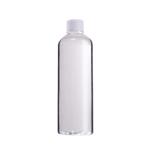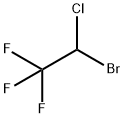Systemic effects and ?Pharmacology of Halothane
Physical properties
Halothane is a colourless liquid with a relatively pleasant, characteristic smell. It is presented in amber-coloured bottles with of 0.01% thymol for stability as it undergoes decomposition in the presence of light. It should be stored in a closed container away from light and heat. Although decomposed by soda lime, it may be used safely with this mixture. In the presence of moisture, it corrodes aluminium, tin, lead, magnesium and alloys. It is known to corrode metals in vaporisers and breathing systems.
Uses
1. Induction and maintenance of general anaesthesia. The halogenated hydrocarbon, halothane (2-bromo-2-chloro-1,1,1- trifluoroethane), was the first of the ‘modern’ volatile agents to be synthesised and remains the standard to which new volatiles are compared. It is seldom used in Western practice now.
Systemic effects
RS:
• Non-irritant and pleasant to breathe during induction of anaesthesia.
• Rapid loss of pharyngeal and laryngeal reflexes.
• Inhibition of salivary and bronchial secretions.
• Dose-dependent increase in ventilatory rate.
• Dose-dependent reduction in tidal volume.
• PaCO2 increases as the depth of halothane anaesthesia increases.
• Dose-dependent decrease in mucociliary function.
• Relaxation of bronchial smooth muscle.
CVS:
• Dose-dependent decrease in myocardial contractility and coronary blood flow.
• Dose-dependent reduction in CO and SVR.
• Bradycardia, thought to be caused by halothane-induced vagal stimulation.
• Marked sensitisation of myocardium to catecholamines, and can cause arrhythmias. This is increased in the presence of hypercapnia, hypoxaemia or increased circulating catecholamines (endogenous or exogenous).
CNS:
• Causes general anaesthesia.
• Increases CBF/ICP.
• Does not cause seizure activity on EEG.
• Induces skeletal muscle relaxation and potentiates NMBAs.
• Postoperative shivering is common; this increases oxygen requirements and results in hypoxaemia unless supplemental oxygen is administered.
GI/GU:
• Inhibits gastrointestinal motility.
• Increases risk of PONV, but this is seldom severe.
• Induces uterine muscle relaxation.
• Can cause significant hepatic dysfunction (see later).
Other:
• Trigger for MH.
Pharmacology
Uptake:
• Halothane has a high blood/gas solubility coefficient, which renders it very soluble, and therefore onset and recovery from anaesthesia are the slowest of the modern volatile agents.
• It is non-irritant to the airway and therefore inhalational induction with halothane is relatively rapid; however, it may take at least 30 min for the alveolar inspired concentration to reach 50% of the inspired concentration.
Metabolism:
• Approximately 20% of halothane is metabolised in the liver. This is greatest of the volatile anaesthetic agents in current use.
Excretion:
• The end products are excreted in the urine. The major metabolites are bromine, chlorine, trifluoroacetic acid and trifluoroacetylethanol amide.
);You may like
Lastest Price from Halothane manufacturers

US $0.00/kg2024-04-12
- CAS:
- 151-67-7
- Min. Order:
- 1kg
- Purity:
- 99%
- Supply Ability:
- 2000ton
